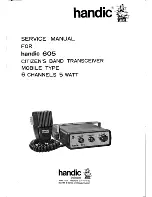
18
11.
Basic Knowledge of Wind Power Technology
You should notice that the power is proportional to the cube of the wind speed and the square of
the radius of the rotor blades. If the radius of the rotor blades is doubled, the swept area is
quadrupled.
If the wind speed is reduced by half (1/2), the power is reduced to 1/8 of the original power. Thus,
a light wind contains little power, so remember to use a larger table fan for the experiments. It will
produce much better results.
Albert Betz was a German Physicist and a pioneer of wind turbine technology. Betz found out that
we can only harvest, at maximum, 16/27 or 0.593 of the power from the wind. This number is
called the Betz coefficient and is the theoretical maximum efficiency that a wind turbine can
harvest from the wind.
In real world, we have to take into account many other factors that affect the wind power being
converted into electrical power by the wind turbines. The efficiency of wind turbines is affected by
the blade parameters, generator efficiency and the mechanical losses in the gear box, etc. But
there is ample wind to make clean, renewable energy for decades to come.
A wind turbine is a device that uses rotor blades
connected by a mechanical shaft to an electrical
alternator to generate electricity. When the wind blows
across the rotor blades, the propeller shaft rotates the
alternator and the alternator makes electricity (much the
same when your car’s engine spins the alternator to
charge the car’s battery).
The amount of power that is produced by a wind turbine
depends on many factors – one of which is the rotor
blades. The power that can be harvested in the area
swept by the wind turbine rotor blades can be described
as follows:
P = 0.5*
ρ
*A*V³
Where:
P = Power in Watts
ρ
= Air Density in Kg/m³ (about 1.225Kg/m at sea level,
less higher up)
A = Rotor Swept Area in m² =
π
r² (r= radius of the rotor)
V = Wind Speed in m/s















































